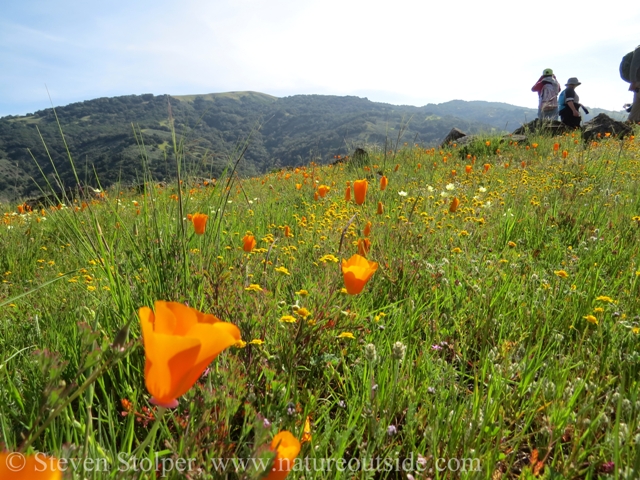
Can millions of years of geology create wildflowers? In California it can, and it does!
California is geologically active. Evidence is everywhere in Northern California. There are mountains, volcanoes, hot springs, and even geysers!
When people think about California geology, they think of earthquakes. But did you know that this same geology creates stunning wildflower displays?
Seductive Subduction
California is a subduction zone. Tectonic plates underneath the Pacific Ocean meet the North American Plate beneath California. The plates with ocean above them are denser than the North American Plate. As a result, they sink (are subducted) into Earth’s mantle. The North American Plate rises. Much of California was once sea floor.
What is Serpentine?
Serpentine is the state rock of California! (I didn’t know there was such a thing as a “State Rock”!) It is an attractive green color with black, and has a waxy sheen. It is relatively soft and forms soils where it appears.
Serpentine is created when heat and water alter igneous rock (like basalt) on the ocean floor. After many millions of years of tectonic movement, patches of the stuff appear throughout the coastal mountain ranges where I live.
Serpentine and Wildflowers
Plants are sensitive to the chemistry of the soils in which they grow. Some soils promote plant growth, others inhibit it. Some soils are even toxic! By looking at plant life you can learn a lot about the soil and the ground beneath. Plants can tell stories millions of years old.
When plants grow on serpentine soil, the results are dramatic! Serpentine soils have a large calcium-magnesium imbalance. Just as with humans, plants need calcium to survive. While most soils have calcium but little magnesium, serpentine soils are high in magnesium but have little calcium.
Calcium and magnesium are chemically similar, so most plants can’t distinguish between them. Generalist plants that try to grow in serpentine soil will take up both magnesium and calcium. But the large amount of magnesium in the soil poisons them before they get enough calcium!1
So serpentine soil is a niche where native Californian plants thrive and invading generalists perish. These natives tend to be beautiful wildflowers! So the boundary between serpentine and non-serpentine soil can be dramatic, even breathtaking. It is like turning on a light switch.
Wildflower Walks
It is March and already spring has sprung. The flowers seem to be blooming early this year. I suspect it is due to the recent rain after a horrifically dry winter. Also temperatures seem to be abnormally high this early in the season.
Each spring, I head out looking for serpentine wildflowers. I choose a different location every year. This time I joined a hike organized by Coyote Lake Harvey Bear Ranch Park. The 4,595-acre park sits in the foothills east of Gilroy, California. Park Ranger Chris led the hike, called Wildflowers of the Serpentine Realm. I was surprised that as many as 30 people turned out for the hike. Despite the large group, the grasslands are so vast that there is plenty of room for solo exploring.
Here are some pictures of the amazing wildflower displays and a Bald Eagle’s nest we found along the way.
The trailhead is at the dam that creates the lake. Our climb to the grasslands is shaded by oaks and bay trees.
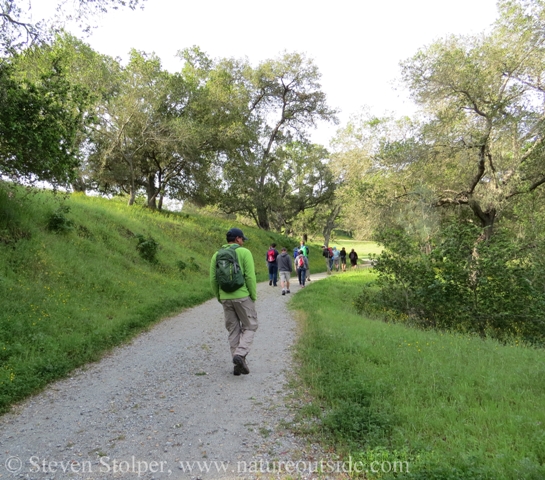
Our climb to the grasslands is shaded by oaks and bay trees.
Here are some of the wildflowers we encountered in this shaded, non-serpentine, region.
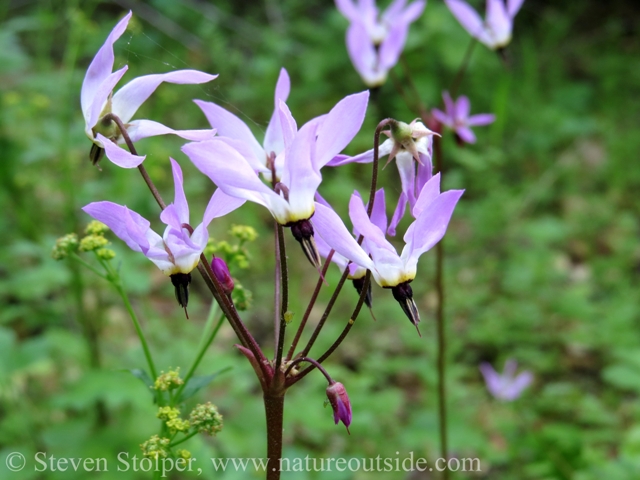
Shooting Stars – Notice the flower is “upside-down”
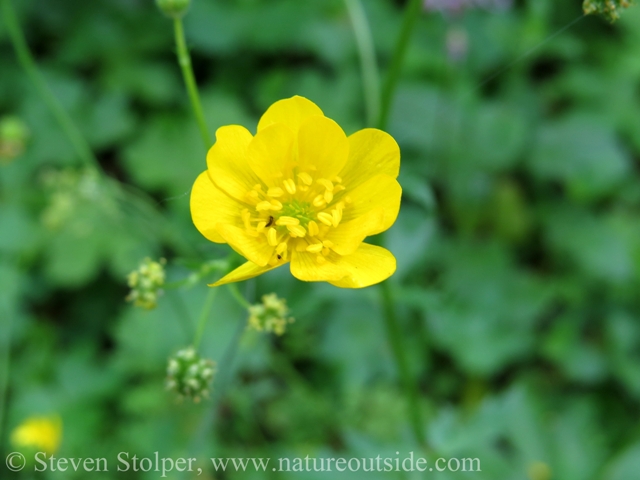
Buttercups
We encountered Mulesears, a member of the sunflower family (Asteraceae). Later this summer, I plan to post an article that shows you how to use this plant for food.
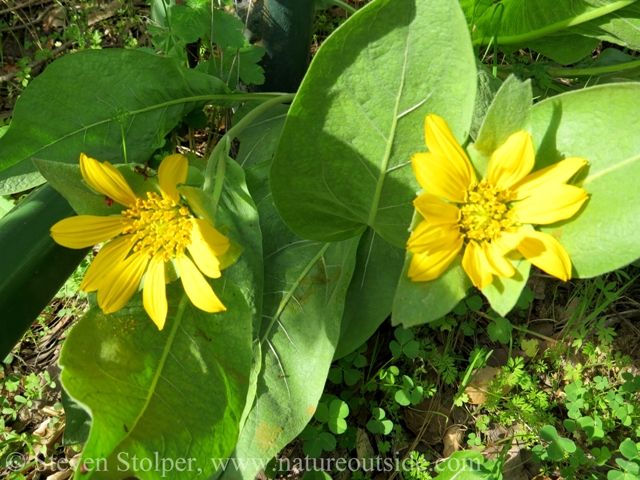
Mulesears (Wyethia sp.)
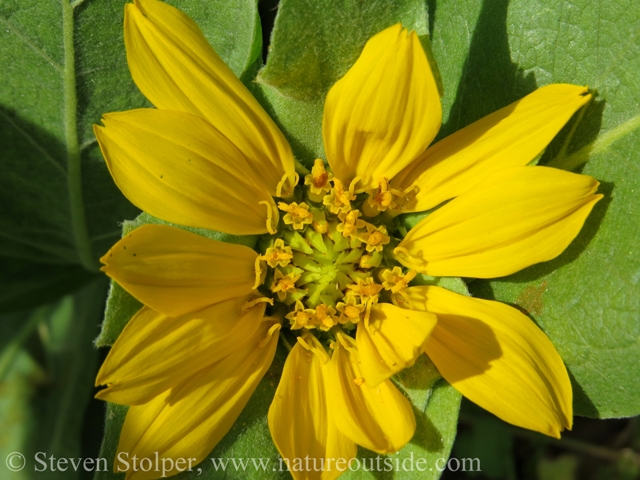
The Mulesears flower is compound, made up of many smaller flowers
We climbed to grasslands, with low cumulus passing overhead in the cool morning.
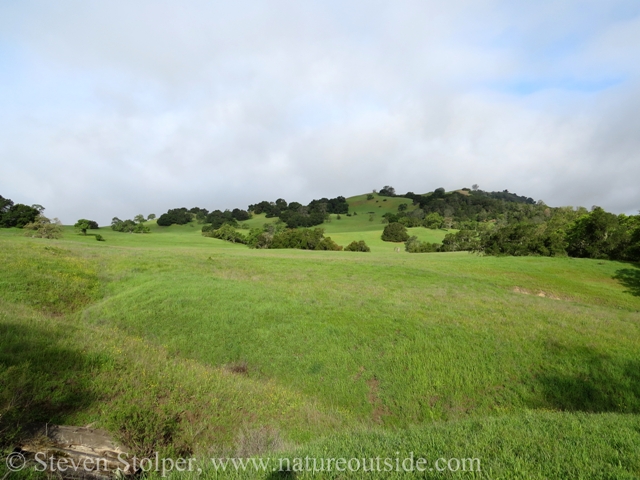
Grasslands (non-serpentine)
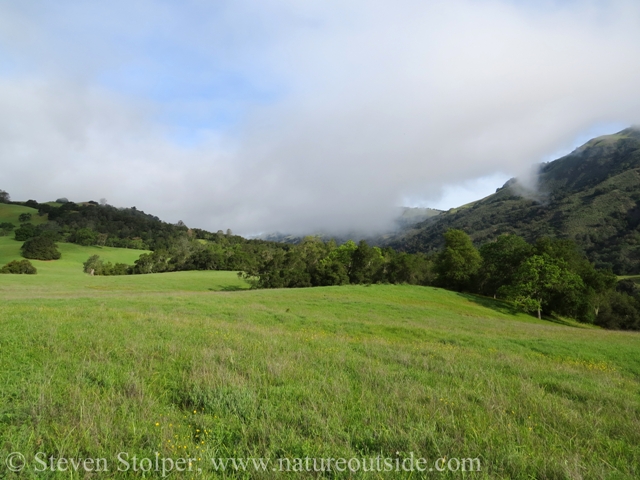
Grasslands (non-serpentine)
There were a number of wildflowers growing in this environment.
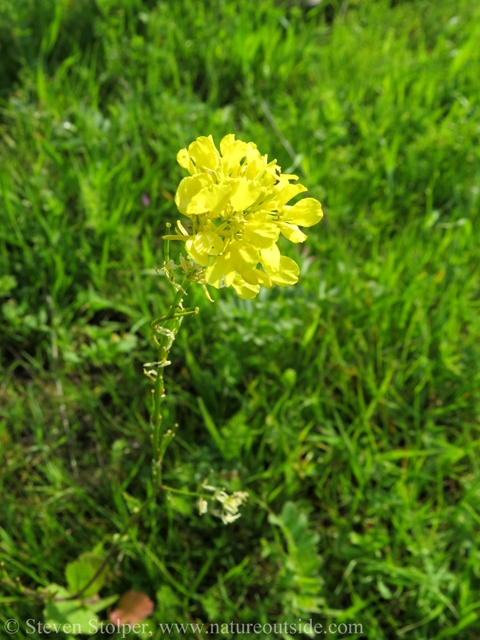
A mustard
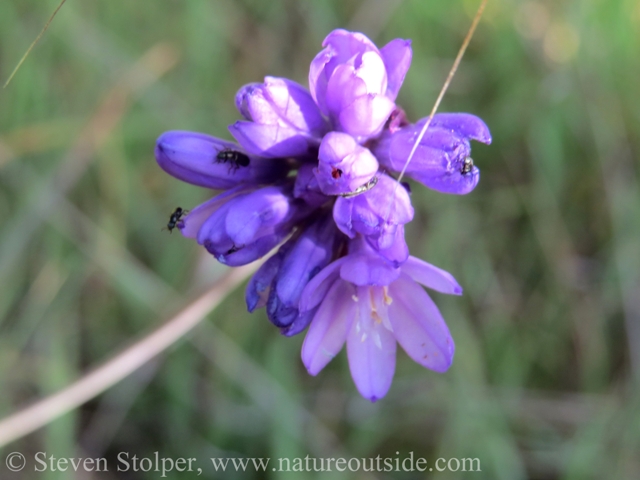
Blue dicks (Dichelostemma capitatum)
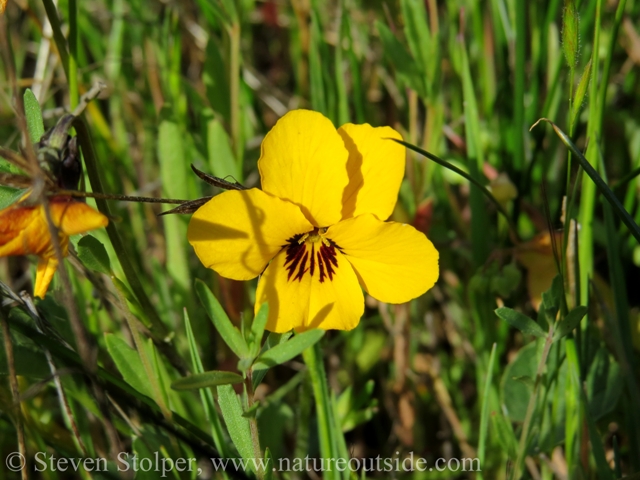
Johnny jump up (Viola pedunculata)
We passed a large clump of pines overlooking the grasslands. Our guide pointed out a Bald Eagle’s nest. If you look closely at the third picture, you can see the back of an eagle sitting on the nest.
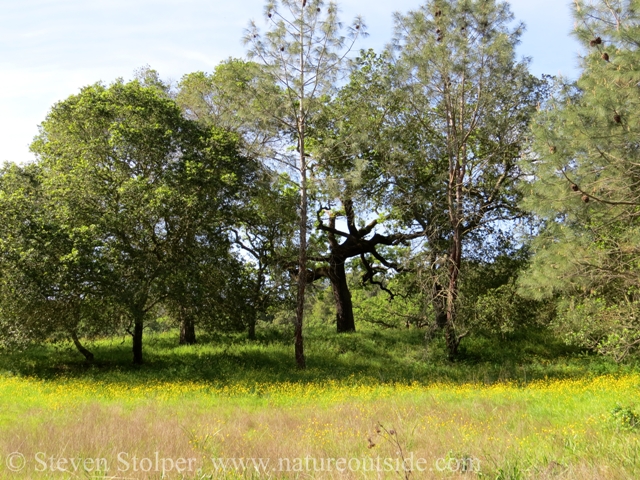
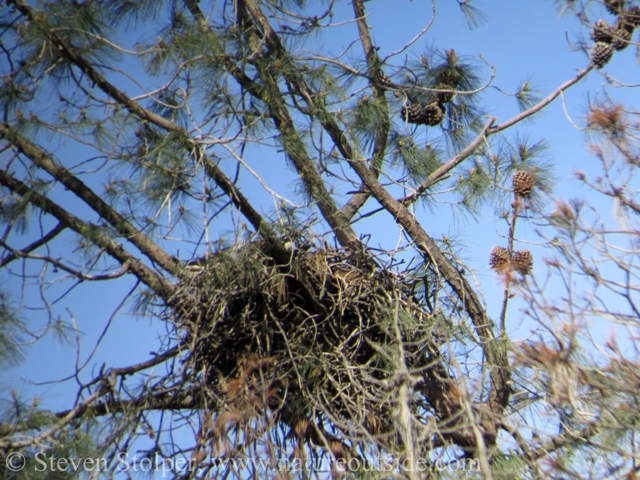
Bald Eagle nest high in the trees. It is very large!
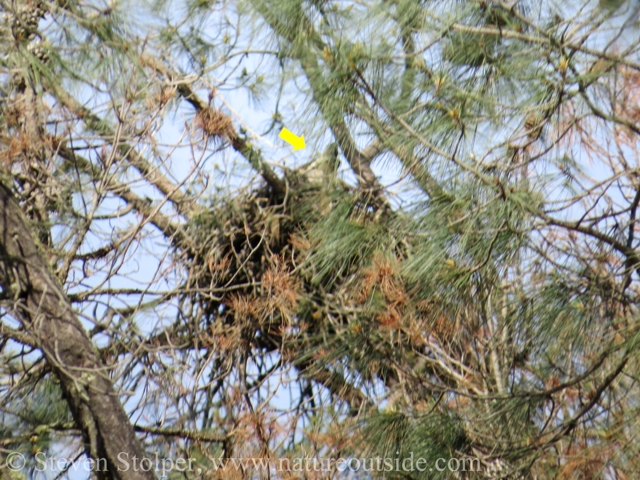
The yellow arrow indicates the back of an eagle
As we approached serpentine soil, the wildflower density increased.
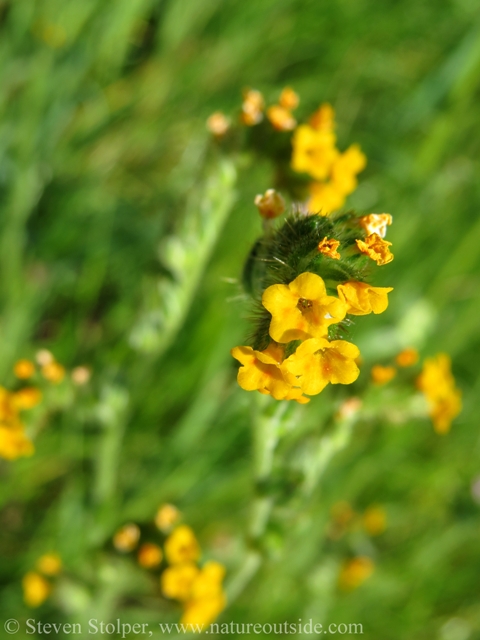
Fiddlenecks (Amsinckia sp.) have a curly growth habit and appearance that resembles a young fern, or the back of a fiddle.
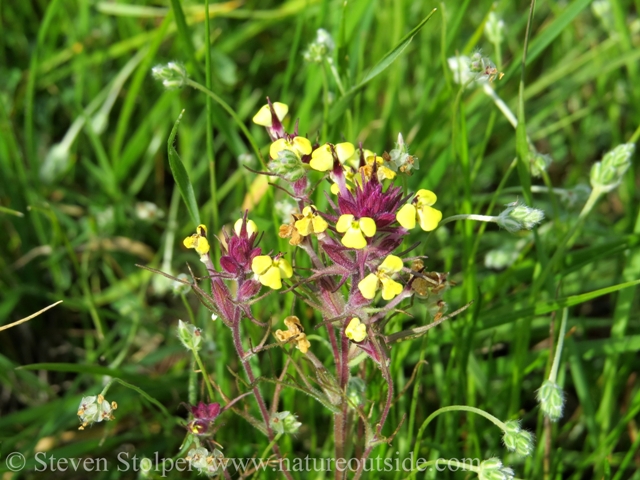
Butter ‘n Eggs (Triphysaria eriantha)
Finally, we begin to see signs of serpentine soil. Colorful wildflowers begin to replace the grasses.
I find some exposed serpentine. It does look kind of like a snake’s skin.
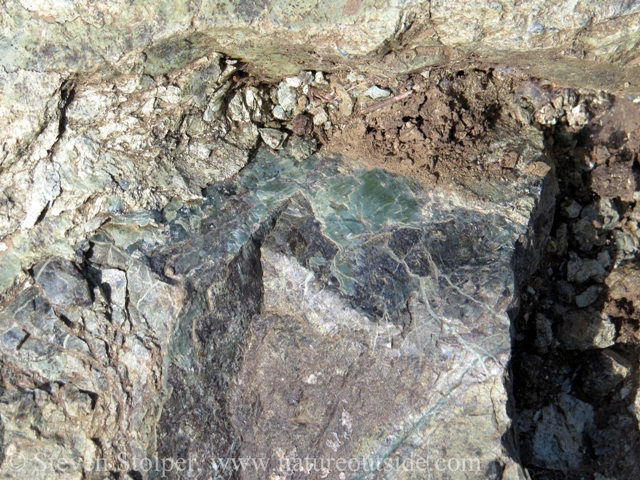
Serpentine rock
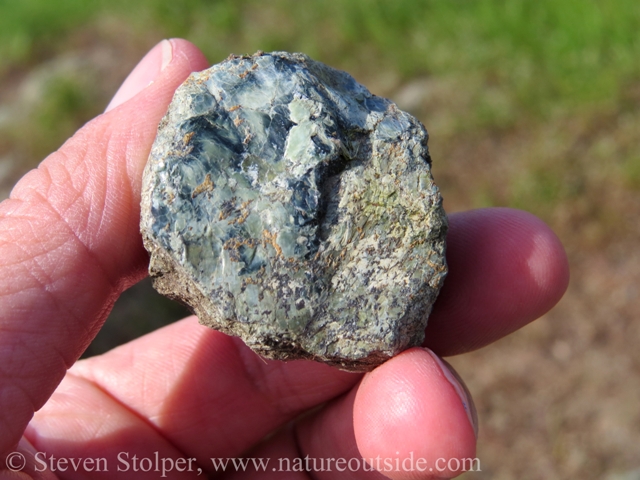
Serpentine rock is distinctive
And then the grass gives way to wildflowers…
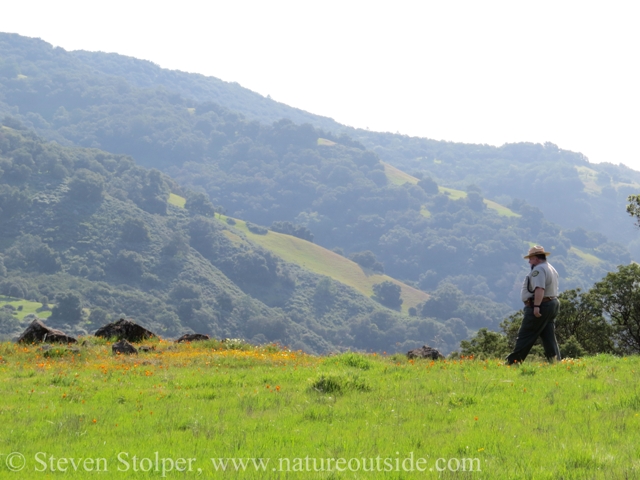
Ranger Chris leads our group
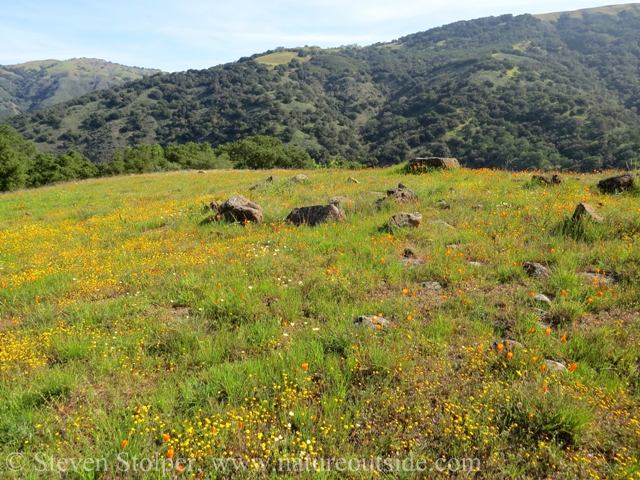
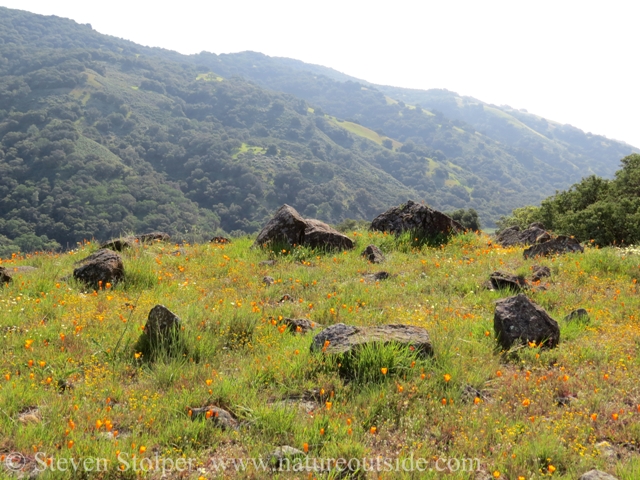
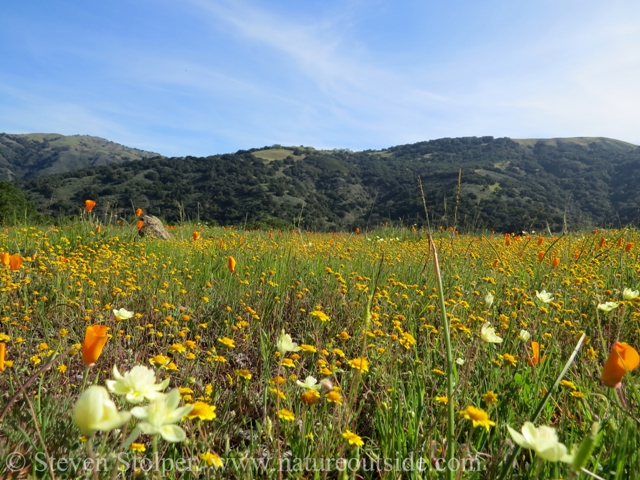
There is a tremendous density of flowers
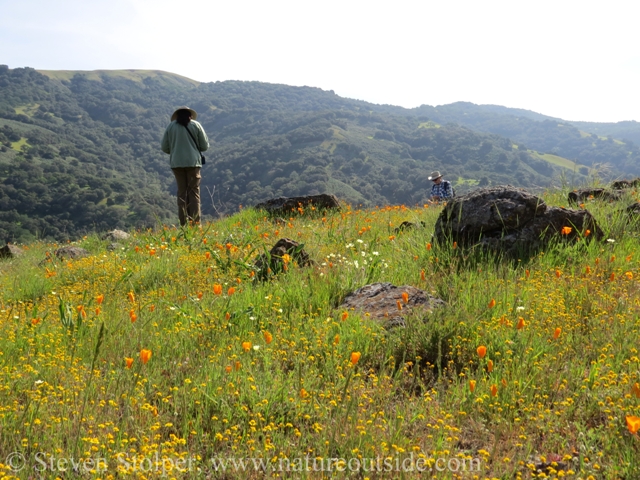
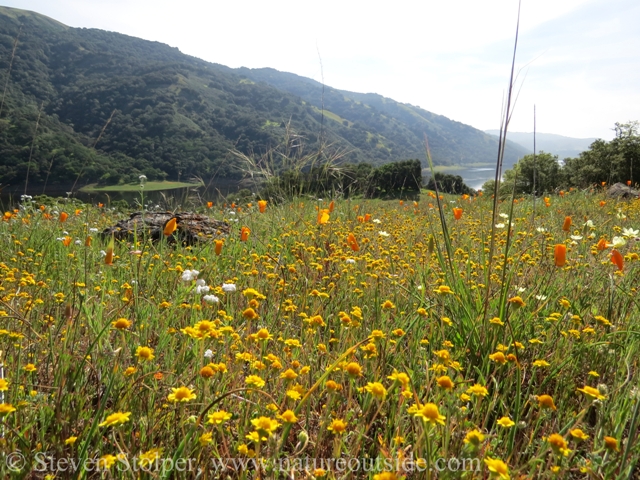
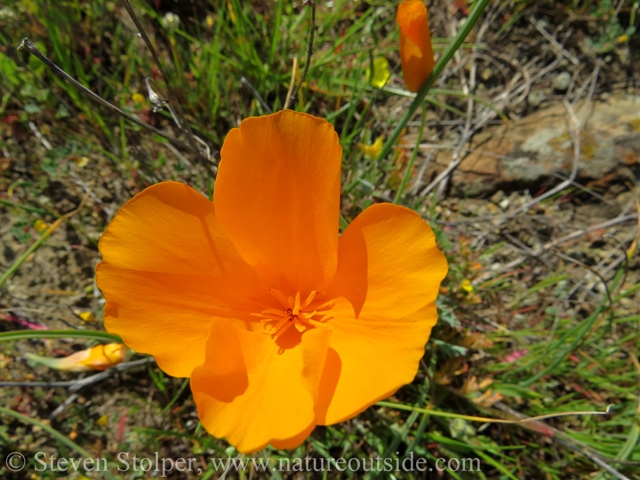
The California poppy is the state flower.
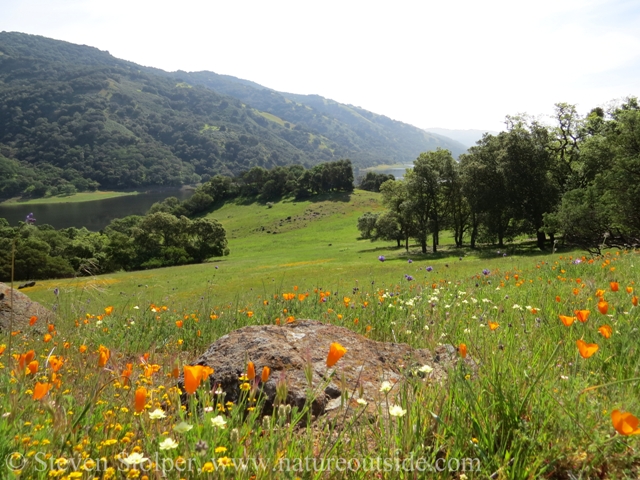
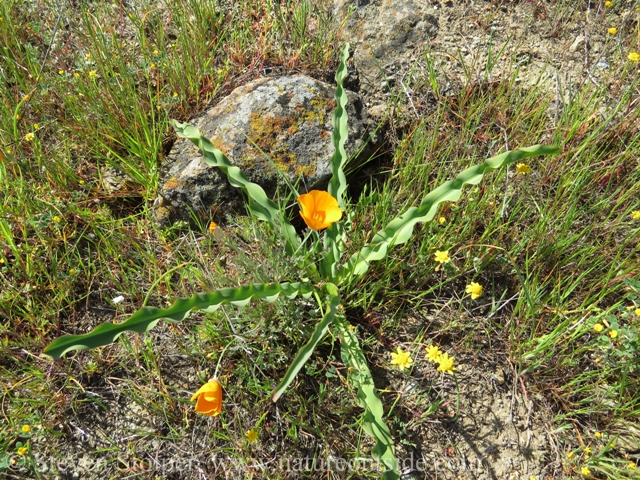
The plant with the long, wavy leaves is soaproot (Chlorogalum sp.). It has many uses including food, glue, soap, brushes, and fish poison.
To our delight, we see the colorful Bay Checkerspot Butterfly. Humans have destroyed most of its habitat and it is now rare. In fact, it is listed as a Federally Threatened Species. These two were helping to repopulate the species.
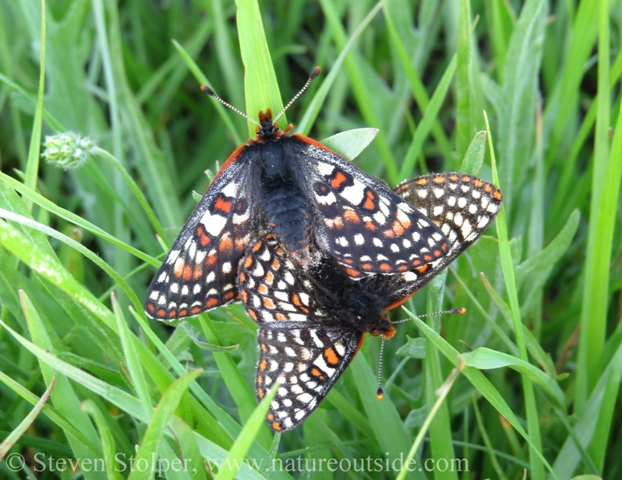
Bay Checkerspot (Euphydryas editha bayensis), a federally threatened species
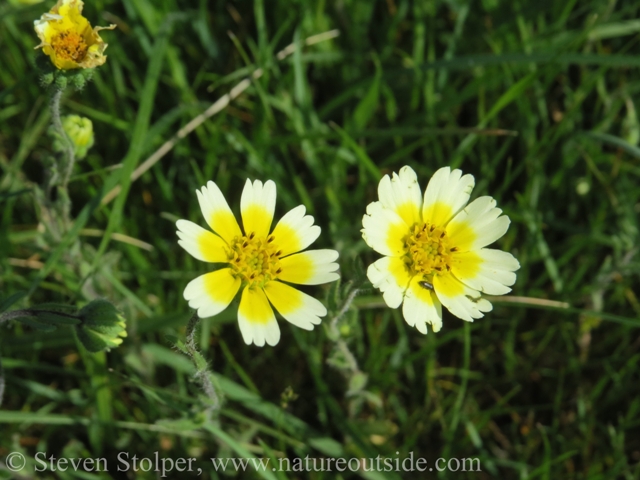
Tidy tips (Layia sp.)
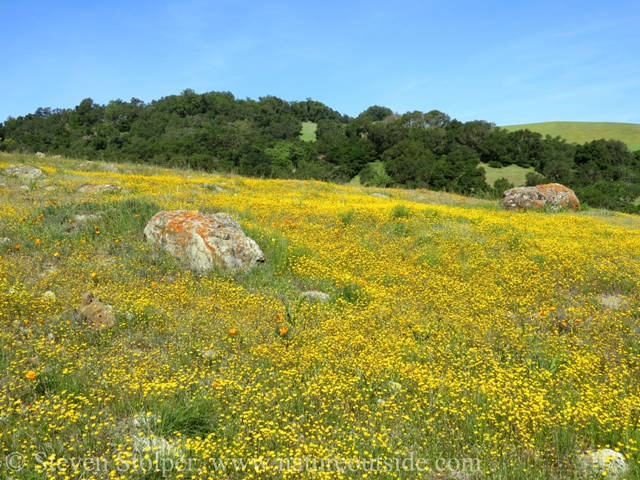
Goldfields (Lasthenia sp.) live up to their name.
The fields cover wide swaths
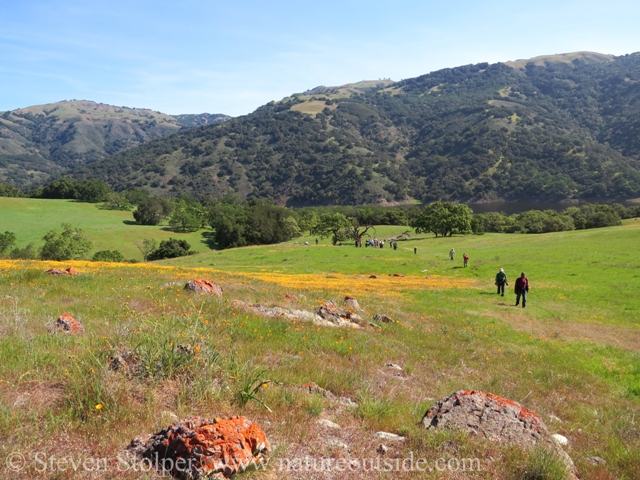
Can you tell where the serpentine soil is?
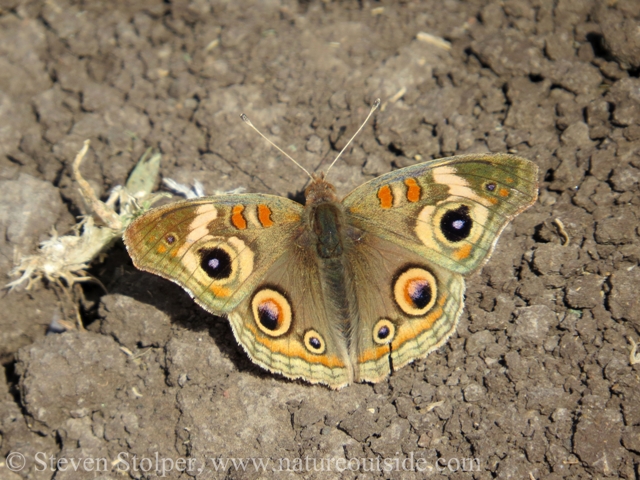
A Common buckeye butterfly (Junonia coenia). One of my favorites!
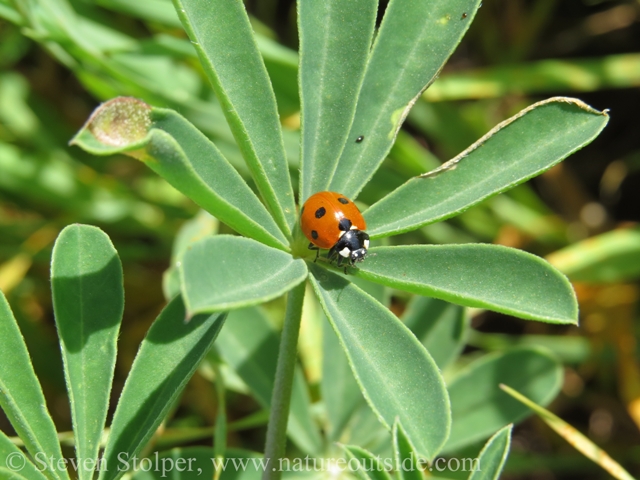
A Ladybird (Coccinellidae sp.) resting on a Lupin.
Has spring sprung near you? Let me know in the comments below.
Related Articles on NatureOutside
Tick Aware – Get a Free Tick Identification Card
Notes
For other interesting articles about nature, see the Nature Section and the Trips Section.



Quite entertaining and informative–thank you. The Bay Checkerspot butterfly’s caterpillar food plants have been overrun by nonnative annual grasses.
I’m glad you like the article, James! In California, non-native grasses have largely supplanted the annual bunch grasses that animals (and people) use for food. I wish there were a way to bring them back to some of the open-space preserves where I hike.
Quite informative & beautiful, thank you! Where do I find info on future organized hikes of this sort?
I’m glad you like the article, Ron! You can find a schedule of my hikes on NatureOutside’s “Events” Page. For hikes at Harvey Bear Ranch, visit the Santa Clara County Parks website for a list of their scheduled activities.
We enjoyed a fabulous hike in the Pinnacles this past Wednesday, 4/3 and the wildflowers were out in force. From Bear Gulch Day use parking lot: hiked Bear Gulch Trail to Bench Trail to High Peaks Trail to Tunnel Trail to Juniper Canyon Trail to High Peaks Trail again and back to the parking lot. Sticky monkey, Milkmaids, Shooting Star, Buttercup, Indian warrior, Blue dick, Indian paintbrush, Star lily, Fiddleneck, Western wallflower, Owl’s clover, Poppy, Lupine, Goldfields, Larkspur, Johnny jump-up, Popcorn flower, Wild cucumber, Purple sanicle. Added bonus was seeing 6 Condors in flight and 3 others perched on the rocks – all within close sight. We lucked out and had a cool, mostly overcast day. It can get really hot there!
That’s an amazing list of wildflowers, Ardis! I always visit Pinnacles when the entire Bear Gulch Cave is open. But it sounds like I need to go back for the wildflowers (and the Condors).
This was a great article! I love both rocks and flowers and this was so informative. Thank you so much!
-summer from Ventura, Ca
You’re welcome, Summer! I’m glad you enjoyed the article.
Great article! Edgewood Park in Redwood City is a favorite of mine for its large variety of wildflowers. Also due to the serpentine soil.
Christine, it has been many years since I’ve visited Edgewood Park. But now you’ve given me another reason to go back and check it out.
I thought mustard is a non-native invasive ??
Susan, you are correct! It is an annual herb that is not native to California. And Black Mustard (Brassica nigra) is an especially problematic one. Note that the picture of the mustard occurs before we reach the serpentine soil.